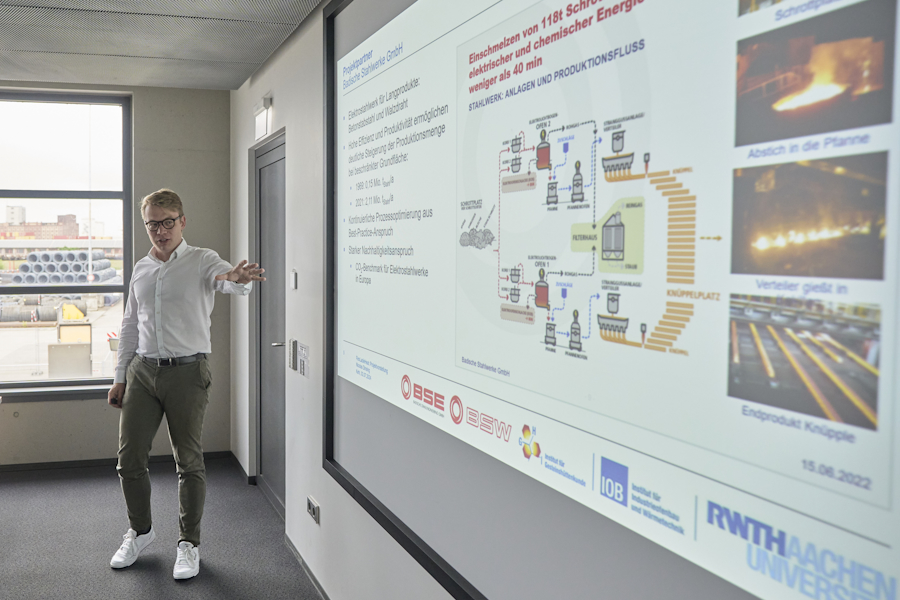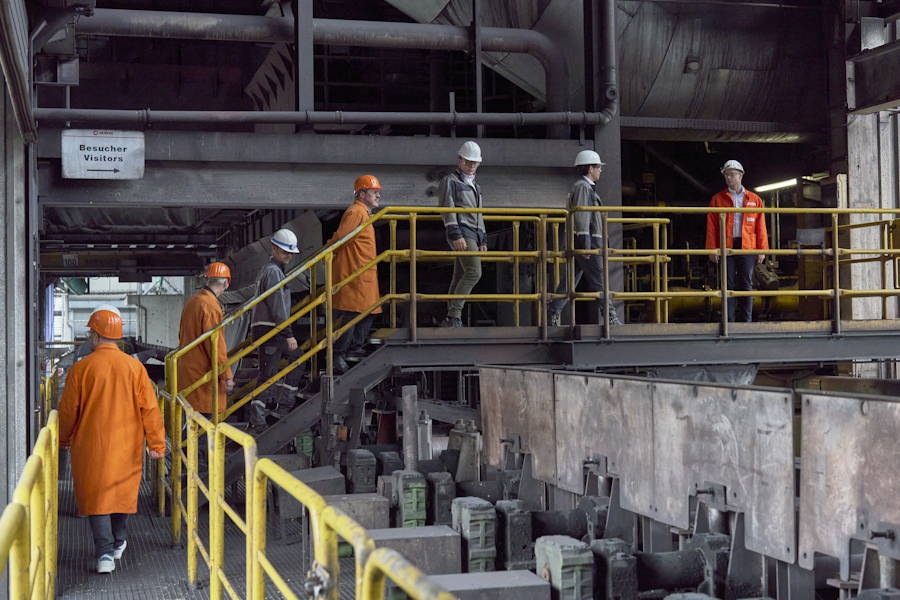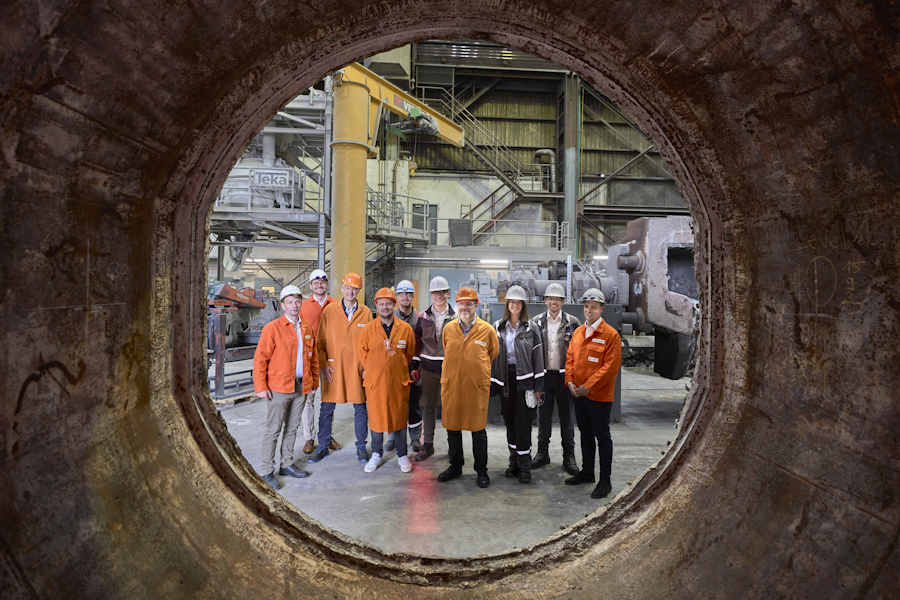On 2 July 2024, the kick-off meeting for the “FlexLadleHeat” BMWK joint project took place in Kehl. The IOB and GHI from RWTH Aachen University and Badische Stahl-Engineering GmbH met at Badische Stahlwerke. The IOB was represented by Prof. Christian Wuppermann, Nico Schmitz, Nicolas Dinsing and Hannah Kaiser.
In cooperation with the RWTH Institute for Rock Metallurgy (GHI), Badische Stahlwerke (BSW) and Badische Stahl-Engineering GmbH (BSE), an efficient oxyfuel combustion system for preheating transport ladles in the steel industry is to be developed as part of the joint project “FlexLadleHeat”. The aim is the flexible use of hydrogen and ammonia as fuel in electro-steel plants in the ladle industry with the aim to reduce CO2 emissions. The development and demonstration of an innovative ladle firing system with a flexible burner that can be operated with oxygen as an oxidizer and any mixture of hydrogen, ammonia and natural gas is being pursued. In addition, an optimal refractory lining concept for the ladle is being developed. In addition to a new burner and control technology, digital process models based on numerical flow simulations will be created. These are intended to further optimize the efficiency of the ladle firing system. By substituting fossil fuels with hydrogen-based fuels, the project is making a fundamental contribution to the complete defossilization of steel production along the electric steel route. The aim is to transfer the project’s technical developments to other units in the steel mill environment after the end of the project.
The IOB’s task in this project is to develop digital process models based on numerical flow simulations (CFD) and to carry out experimental investigations of the ladle furnace system to validate the process models that have been developed. Numerical simulations are a established tool in the design and optimization of thermoprocessing systems and enable parameter studies to be carried out in a time- and cost-efficient manner. As such, they can also be used to optimize ladle furnace systems and as a basis for the subsequent creation of a reduced furnace model that contributes to the efficient operation of the ladle furnace. The scope of suitable simulation models ranges from the representation of actual fluid flow to models for turbulence, heat transfer by convection, thermal radiation and chemical (combustion) reactions.

Kick-Off meeting at Badische Stahlwerke
The project partners and the project management organization Jülich (PtJ) met at the kick-off meeting and jointly launched the joint project. After being welcomed by the CEO of Badische Stahlwerke, Andreas Volkert, and Professor Christian Wuppermann, the project, the tasks of the individual project partners and the progress of the project to date were presented. This was followed by the ceremonial signing of the cooperation agreement by Professor Christian Wuppermann, Andreas Volkert and Sebastian Baumgartner (CEO of Badische Stahl-Engineering GmbH). This was followed by a tour of production and ladle manufacturing at BSW’s electric steelworks. In the evening, the participants met for dinner and rounded off the day together.

Further information on the project partners:

